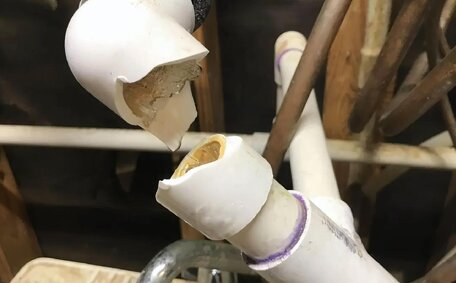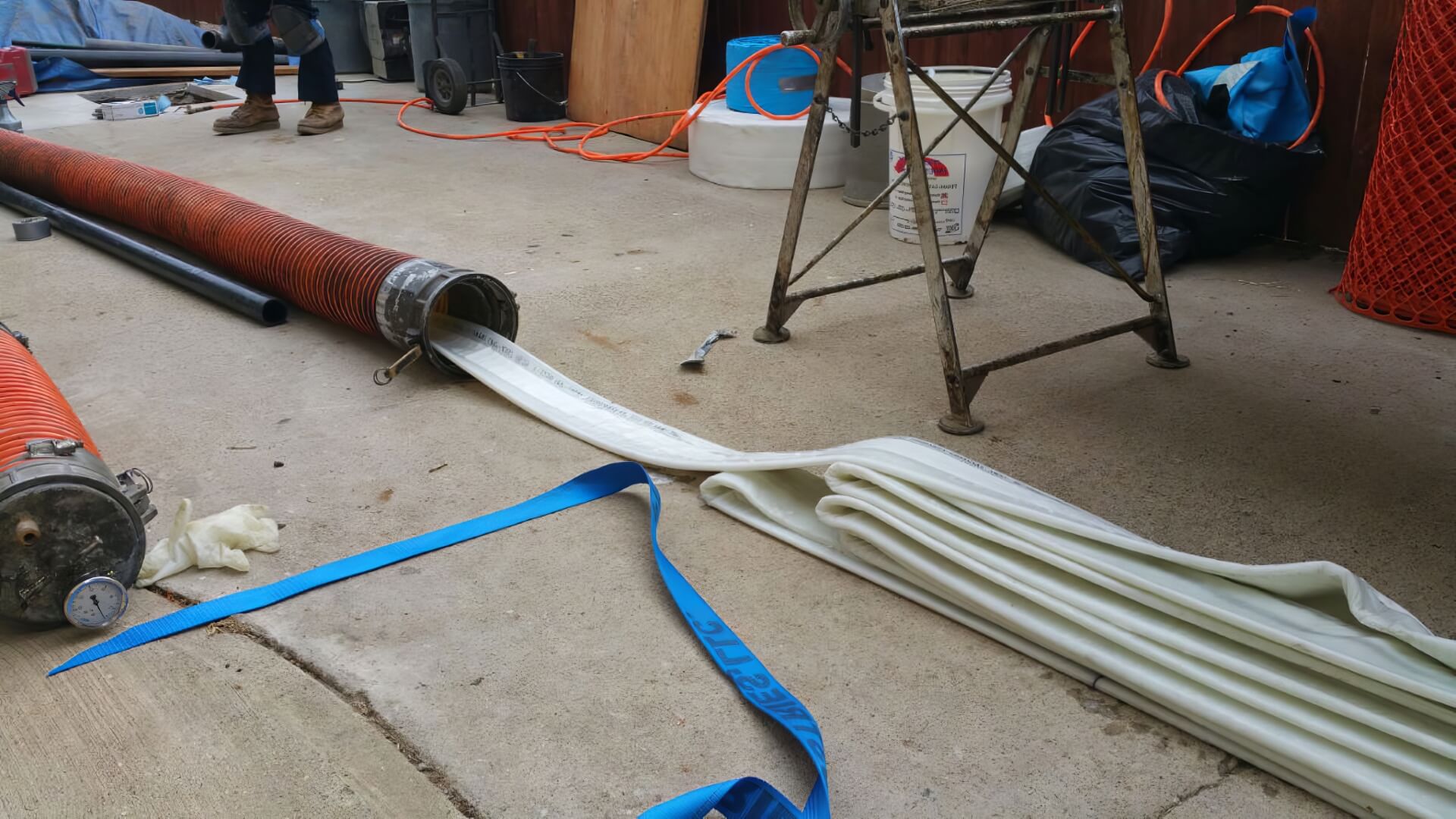Introduction to Emergency Gas Shut-Off
For Castle Hill residents, understanding how to swiftly manage an emergency gas shut-off could be life-saving in case of a suspected gas leak.
Indicators of a potential gas leak include the smell of rotten eggs, hissing sounds from gas appliances or pipes, dead vegetation near gas lines, or symptoms of carbon monoxide poisoning. If you smell gas, immediately cease the use of all gas appliances and eradicate any potential ignition sources.
If you notice any of these, it is vital to turn off gas swiftly. If safe, improve airflow by opening windows and doors.
You should then locate your gas shut off valve, which when turned will switch the gas meter off, usually found on the service pipe supplying gas to your home.
Learn the workings of your gas shutoff valves in advance to ensure you can effortlessly halt the gas supply during an emergency. If the leak persists or you ever feel your safety is compromised, evacuate immediately and call emergency services on gas leak 1800 427.
Although this guide covers emergency shut-off procedures, remember that only licenced professionals should undertake gas repairs or work. Under no circumstances should untrained individuals attempt to reconnect gas supplies that have been turned off due to safety issues.
Recognizing Signs of a Potential Gas Leak
Be aware of these vital signs indicating a potential gas leak at your Castle Hill residence:
Odour
- Lp gas and natural gas have an added odorant that makes them smell like rotten eggs. This enables detection if one can smell the distinctive odour of gas leakage.
- A continuous smell of gas or rotten eggs, particularly near appliances or pipes, usually signals a gas leak.
- Listen for an unusual hissing sound coming from a gas appliance or pipe connection. This sound often accompanies escaping gas.
- Look for dead patches of vegetation or dirt near the gas line infrastructure. Escaping gas can cause vegetation to die.
- Bubbles emerging from pools of water near gas infrastructure may indicate a leak.
If you detect any of these signs, immediately turn off all gas appliances and eliminate any ignition sources. Ventilate the area if possible, then shut off your home gas supply at your metre or cylinder, an action that will stop flow of gas. Evacuate the house and call emergency services if a leak near your gas appliances poses a safety risk.
Odor
Installed natural gas contains an odorant, rendering the smell similar to rotten eggs for easy leak detection and prompt warning.
Should you detect the scent of rotten eggs near gas appliances, pipes, or fittings, consider it an urgent warning sign of a gas escape.
Never ignore the smell of gas, even if it seems faint. Evacuate immediately and perform an emergency gas shut. Only return once emergency services have determined there is no longer a risk.
Sounds
One of the clear sounds indicating a gas leak is a high-pitched hissing or whistling noise coming from gas appliances or pipe connections.
This sound is caused by pressurised gas escaping through a breach, crack or loose fitting in the gas infrastructure. If you hear this hissing noise within your home, especially near the gas stove or water heater, you should treat it as an immediate sign of danger.
Turn off any operating appliances and vacate the premises, ensuring all naked flames or cigarettes are extinguished; then locate and use the gas meter’s shutoff valve. Then locate your gas shutoff valve and twist the off main valve to stop flow of the gas supply.
Only call emergency services or a licensed gas fitter to inspect once it is safe to re-enter the property.
Visual Signs
There are a few key visual indicators of a potential gas leak to look out for around gas infrastructure:
- Inspect vegetation, plants and grass near gas pipe or metres. If you notice any dead or dying patches, this may signal a gas leak underground.
- Monitor for any instances of dirt being displaced into the air near gas lines or meter connections, which may suggest a gas escape.
- Bubbles rising in puddles, drains or wet areas close to gas pipes likely means gas flowing inappropriately and bubbling up through the water.
Such visual cues near gas infrastructure should compel immediate action. Ventilate the area if safe to do so before shutting off the main gas supply at the metre or cylinder. If the leak poses an immediate threat, evacuate and call emergency services.
Shut off any nearby appliances and eliminate ignition sources.
Taking Immediate Action in a Gas Leak Emergency
As soon as you suspect a potential gas leak in your Castle Hill home, you must take swift action to protect yourself and your family.
The first step is to turn off all your natural gas heaters, stoves and hot water systems. It is critical to eliminate any naked flames or ignition sources that could trigger an explosion when you turn the gas off in an emergency.
Open doors and windows for ventilation and promptly notify local gas services for assistance in clearing the gas. Avoid using light switches or phones in the area as these things can create sparks.
Locate the main valve at your gas meter or shutoff valve, which is typically near the exterior of your home. Carefully turn this safety shutoff valve to the ‘off’ position to shut down the gas supply.
Evacuate everyone from the house and retreat to a safe distance. Call emergency services on 000 to report the leak. Never re-enter the home until gas technicians deem it safe again, and always have the emergency number on hand.
Evacuating the Area
If a gas leak presents immediate danger or persists after attempts to shut off the supply, it is essential to evacuate the area.
Gather all occupants and pets and move away from the affected area to a safe distance, at least 100 metres away or out of the home entirely. Avoid using any electrical equipment or phones in the vicinity of the leak as sparks could ignite the gas.
Once at a secure location, away from the entire house, immediately call 000 to report the emergency and request assistance from fire crews. Provide contact details and information on the gas leak’s specific location. Do not re-enter the house or allow anyone else to do so until emergency services have contained the leak and declared the area safe.
For ongoing gas leaks or areas where gas has accumulated, evacuation may be prolonged over several hours while crews work to dissipate the gas. Listen carefully to all instructions from emergency personnel, and don’t hesitate to call gas leak 1800 if you require further guidance.
Avoiding Ignition Sources
After detecting a gas leak, it is critical to perform a gas shut off to avoid any ignition sources that could trigger an explosion. This means no use of electrical switches, mobile phones or anything that can create a spark.
Do not turn any lights or appliances on or off. Avoid using phones in the area of the leak. Also refrain from starting vehicles, smoking cigarettes, or lighting matches and candles during an ongoing leak.
Likewise, do not attempt to relight gas appliances pilot lights or reignite the burners on any gas appliances you have turned off. The gas equipment should remain switched off until emergency crews have resolved the leak and declared the area safe again.
Ventilating the Area
When a gas leak is detected, it is crucial to ventilate the area as soon as possible. Open all doors and windows in the affected area to allow gas to dissipate instead of accumulating indoors.
Turn on exhaust fans to actively circulate air and find the gas shutoff valve which is usually clearly identifiable. Avoid using any electrical switches in the immediate vicinity as sparks could ignite the gas. Ventilate the space for at least 5-10 minutes before the valve operation that shuts off the gas supply.
Ventilating helps reduce gas concentration so if ignition were to occur, there is less fuel to intensify the fire. It also limits risk of suffocation, explosion and poisoning. Keep ventilating until emergency crews arrive and contain the leak fully.
Shutting Off the Gas Supply
When an emergency gas shut-off is required, it is critical to correctly locate and operate your gas metre’s shut-off valve.
In most Castle Hill homes, the gas metre and shut-off valve are located on the side of the exterior wall nearest to your home gas appliances inside. You may find these on the side or front of your house, exteriorly located. The valve handle is crucial for gas safety, allowing you to manually switch off the gas supply when needed.
Familiarise yourself with your meter’s precise location beforehand to ensure easy access in case all your gas appliances need to be shut off in an emergency.
The shut-off valve normally resides as part of or adjacent to the gas meter assembly.
Modern gas pipes utilise robust multilayer tubing, negating the need for excessive force. Once in the off position, double check that all your appliances have had their individual wall switches turned off inside as well. Do not attempt to turn the gas back on - This can only be attended to by a licenced professional.
Locating the Gas Meter
It is important to know where your gas metre is located in case you need to quickly shut off gas supply to your Castle Hill home. Gas metres are typically found on the external wall nearest to the gas appliances inside the home.
Start by checking the outside walls closest to your gas water heater or kitchen stove before you turn your gas meter off. This common placement of the metre minimises pipe lengths. Look for a metal box around 1ft x 1ft in size mounted vertically, with gas pipes and valves also used connected.
Turn your attention to clearing any foliage so the gas meter is easy to access. The shutoff valve required for gas supply interruption will be on the metre or supply pipe. Being able to quickly locate this valve is critical in a gas leak emergency.
It’s a good idea to Familiarise all your household members so they can find your gas shut off valve’s exact location during an emergency.
Identifying and Operating the Shut-Off Valve
It is crucial to know how to locate and operate the valve to gas your residence during an emergency gas leak. This valve allows you to manually switch off the gas supply to your Castle Hill home when needed.
Valves are generally positioned on the exterior wall closest to your home’s gas appliances. Look for a handle or flat metal tab that rotates a quarter-turn. Turning this perpendicular to the pipe will shut off all flow gas.
Make sure this valve and the surrounding metre assembly are free of obstructions. Practise occasionally to ensure ease of use during an actual leak.
Familiarise all family members with the proper valve operation. Familiarise all family members with the proper valve operation.
Safety Precautions When Dealing with a Gas Leak
In a gas leak scenario, prioritise safety by immediately contacting emergency services on 000 and getting in touch with licensed gas experts, who will provide instructions tailored to the leak’s specifics.
Guarantee a safe evacuation of all individuals to an outdoor space well-distanced from the leak.
In the event of a fire emergency, do not attempt to locate the shut-off valve yourself if the gas concentration poses a suffocation or explosion risk. If safe, shut off the individual appliances before the main gas off procedure using your metre shut-off valve inside your house.
Wait for your licensed plumber or gas professional assistance after evacuation. Turn off your valve gently - force is not needed.
Let professionals whose line of work involves gas related matters handle the situation to prevent deadly accidents.
Consult our guide on utilising specialist leak detection sprays for additional insights on electronic detectors. If pipes are damaged, Do not attempt repairs on appliances pilot mechanisms or gas lines.
Calling the Fire Department and Gas Company
If a gas leak presents an immediate threat to safety or persists after attempts to shut off the supply, call 000 immediately to summon emergency services.
The fire department will despatch crews trained in managing situations when gas leaks occur, including how to operate the emergency valve located at the gas meter. Provide details on the type of gas and metre location. Firefighters will use specialist equipment to detect leaks, shut off gas supply and ventilate the area.
You should also Contact licensed gas professionals or your gas supplier, such as Jemena or Ausgrid for assistance. Detail the type of gas, metre details and any appliance issues. They can assist emergency crews, arrange repairs after evacuation, as well as restore regular Australian gas supply once the leak is fixed.
Emergency Contacts:
- Fire and Rescue NSW (Castle Hill): 1300 349 338
- Jemena Gas Emergencies: 132 636
- Ausgrid Gas Leaks: 131 003
Ensuring Proper Ventilation Before Re-Entry
Before re-entering a property after a gas leak, it is crucial to ensure the area is properly ventilated first. Even if the gas supply has been shut off, there may still be residual gas present that could pose a risk of explosion or suffocation.
Post emergency shut-off, keep doors and windows open to maximise gas dissipation. Use fans to actively circulate air for at least 5-10 minutes. Emergency crews will then use specialist equipment to detect any remaining gas pockets.
Only re-enter the property after technicians have confirmed safe oxygen levels and gas concentrations. Do not assume it is safe to return based on whether gas odour is still detectable, as some accumulation may linger. Always verify ventilation clearance with qualified professionals after a leak.






